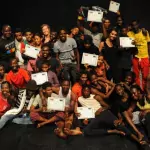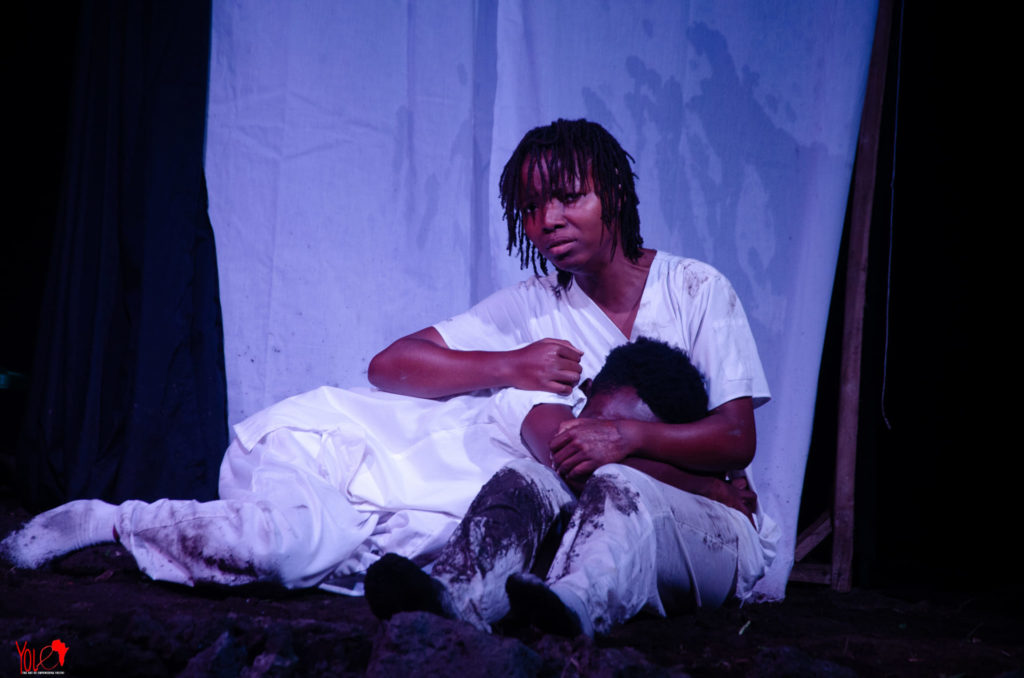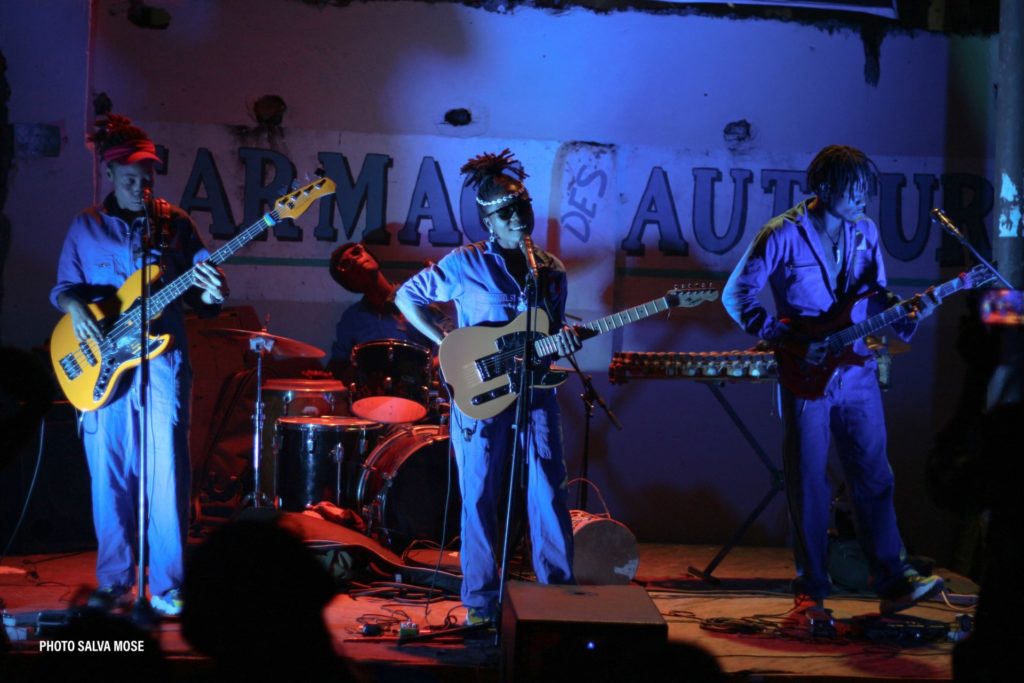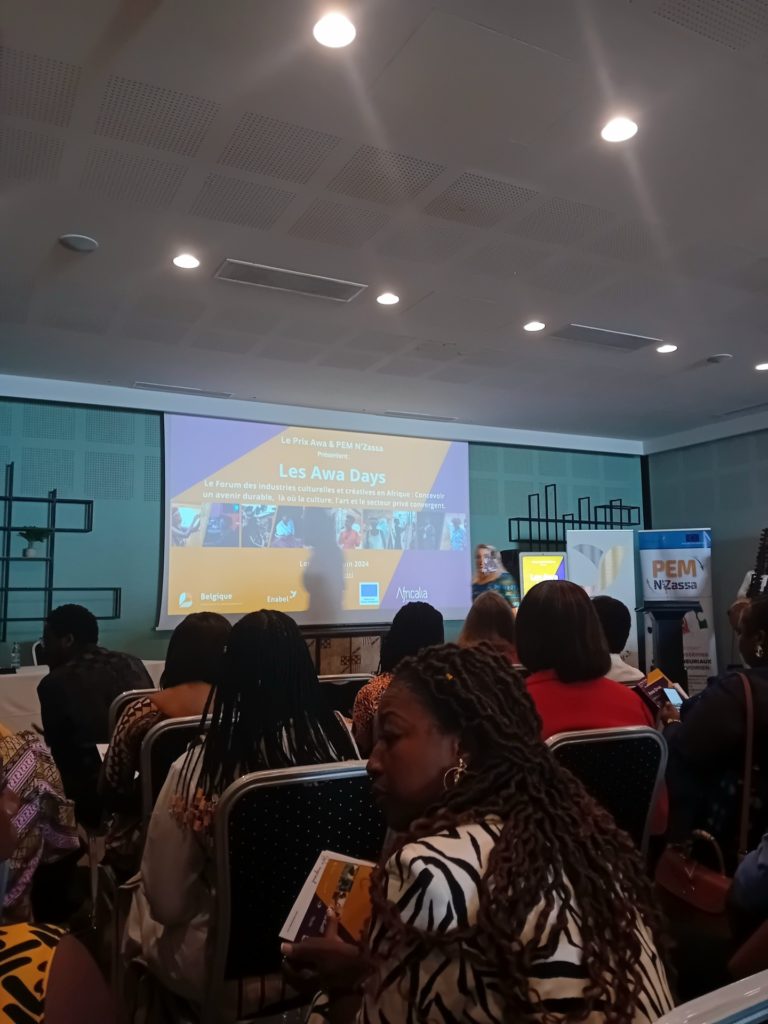Desire for the horizon: dance to free your body and mind. And, above all, to escape the vicissitudes of refugee life. This was the aim, and above all the result, of a workshop organised recently in one of their camps in Burkina Faso by Africalia's partner, the Centre for Choreographic Development (CDC) - La Termitière from 20 February to 6 March, under the artistic direction of choreographer Salia Sanou. Also taking part were partners from the Burkina Faso centre and choreographers from Congo (DRC), Chad, Niger and Burkina Faso. Similar projects have been developed in various countries in the region. Their aim is to reduce tensions by living together and fostering self-confidence, especially among young people. Sanou is not new to the idea, having already set up a similar workshop in 2014-2015.
Bringing dance back into the camp also means re-enchanting spaces that are often exclusionary and confining. This is what Sanou and his colleagues have done at this workshop and several others in the region, with the support of various experts, notably in law and sociology. To "restore hope".
To find out more about these dance workshops, read the article below or download it in pdf format by clicking here.
CDC-La Termitière: dancing to broaden horizons
From 20 February to 1 March 2017 was held at the Centre de Développement Chorégraphique (CDC)-la Termitière in Ouagadougou, a meeting to exchange ideas and formulate methodologies for conducting artistic workshops in refugee camps. The aim is to get bodies moving in order to expand horizons.
This meeting, organised by the CDC-La Termitière in partnership with Africalia saw the participation of choreographers from the Democratic Republic of Congo, Chad, Niger and Burkina. It follows on from Refugee on the move (ROM) a project initiated by the African Artists for Development Foundation in a dozen refugee camps in Africa. In Burkina Faso, the artistic director of the project is choreographer Salia Sanou. The aim of the project is to use contemporary dance in the camps to strengthen community life and restore the self-confidence of young refugees.
Between October 2014 and August 2015, the Burkinabè choreographer led dance workshops in the Mentao and Saag-Nioniogo camps in Burkina Faso; his immersion in this environment inspired the show The desire for a horizon featuring two young refugees. Unfortunately, for visa reasons, these two were unable to tour the show in Europe.
All the participants in this meeting are aware that bringing dance into the camps is a way of re-enchanting these territories of exile, these enclosed spaces where different communities find themselves in a situation that they hope is temporary but which may last indefinitely. Given the complex nature of these territories, it is necessary to enter them with caution, which requires a tried and tested methodological approach that is mindful of human dignity. Hence this meeting to model good practice.
The exchanges were intense and fruitful. Choreographers Charly Mintya from Chad, Lucie Kabemba from the Democratic Republic of Congo, Mamane Sani from Niger and Salia Sanou from Burkina Faso recounted their experiences in the camps, their successes and difficulties in running workshops in these confined spaces. Charly Mintya, for example, is a pioneer in this field, having initiated workshops with young Central Africans living in a refugee camp in southern Chad. Lucie Kabemba has worked with the Gbadolité refugees in her own country, while Mamane Sani has run dance programmes in the Diffa refugee camps in Niger.
Alongside the choreographers were human rights experts and social scientists who helped them gain a better understanding of life as a refugee. Roxanne Mares, a psychologist and dancer, shared with the audience her fifteen years' experience with the MeliMél'ondes association in supporting people in difficulty. Representatives of the National Refugee Committee (CONAREF) and a human rights specialist spoke to the artists about the philosophy of the Office of the United Nations High Commissioner for Refugees (UNHCR) and the codes of conduct for working in the camps. A sociologist, Adama Boris Ouédraogo, facilitated the drafting of the guide, and at the end of the workshop he presented the methodology for artistic intervention in refugee camps.
Salia Sanou, very pleased with the progress of the work, confides: " This project to develop a methodology for running artistic workshops will enable choreographers concerned by the refugee problem to work in the camps in an effective and structured way. We set out in a spirit of sharing, bringing dance to work on the bodies, to help young people develop, to create a link between them, to restore hope and open them up to the future. ".
Like a dancing snake
At the same time as the methodological guide was being drawn up, the choreographers, together with a dozen young refugees from the Mentao camp in northern Burkina Faso, prepared a show which was performed at the close of the meeting. On the afternoon of 1 March, the audience was treated to an edifying performance by the young refugees. They were chaperoned by professional dancers, including the choreographers who had taken part in the workshop.
This show is a choreographic mishmash, so varied are the dances served up to the audience. The dancers move cheerfully from Tamatchek ballets to undulating dances from the Congo before moving on to break dance. These young boys and girls run around the stage, twirling, dancing and forgetting themselves in the rhythm, their young bodies vibrating with a generous insouciance.
Apart from the youth of the refugees, evident in their hairless faces and frail bodies, they are indistinguishable from the other dancers. They are just dancers, young men and girls who take flight, defy gravity, tame the stage and subdue this small territory. They are partners in communion, executing figures and sculpting ephemeral monuments with their bodies. Watching the young Tuareg girls gracefully and beautifully perform the dance steps of their community brings to mind lines from Baudelaire's poem "The Dancing Serpent": Watching you walk in cadence / Beautiful with abandon / You look like a snake dancing / At the end of a stick.
When, in the battles, which are challenges between groups of dancers, the youngest of the refugees, Ag Abdoulahi Amiri, launches into a freestyle, an improvisation, to the noisy accompaniment of the whole room, the audience senses that something is happening. The audience follows this frail body as it traces arabesques on the stage, twirling around before finishing with an acrobatic figure, head down, arms crossed and legs, one outstretched, the other bent, forming a sort of triangle. The finale of this solo triggers uninterrupted applause.
The boy is carried in triumph by the whole troupe. Perched on the broad shoulders of a dancer, he seems to suddenly discover the audience and the cheers. Slowly, a radiant smile, as wide as the sun, spread across his little face. He's happy... Just that smile on a child's face alone shows the importance of dance in the camps. Africalia, whose credo is "Creativity is life", understands this. And that's what justifies its commitment to this initiative. Frédéric Jacquemin, Managing Director of this organisation said: " we need a cultural response to the extremely complex and often dramatic situation of the refugees in the Sahel countries, and especially of the young people in these camps... We know that the cultural response to the crisis of meaning of these young people is the solution to their integration into society, into the life of the camp. As you know, it is culture that gives hope. "
Saïdou Alcény BARRY








